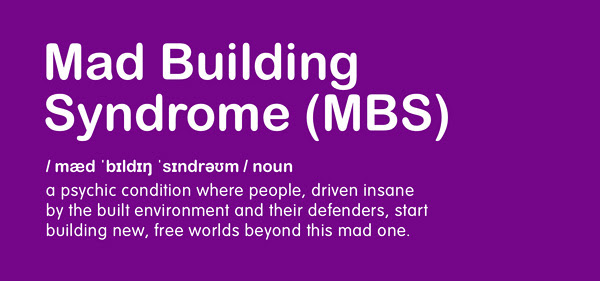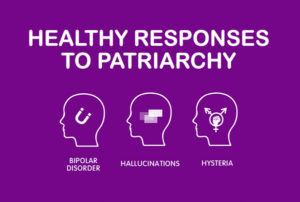
TYPE: EXHIBITION, MEDIA ART
Curated by Sajdeep Soomal
Psychiatry is a modern religion and the asylum is its old church.
Starting in the late 19th century, psychiatrists routinely crafted new disease categories to understand the mad mind: anorexia, hysteria, schizophrenia, depression, gender dysphoria, anxiety. By the 1950s, the psychiatric establishment neatly assembled its shaky ideas about the human mind, diagnostic categories, legal and moral stature, and treatment plans in a holy book called The Diagnostic and Statistical Manual of Mental Disorders (DSM). The manual armed psychiatry’s willful adherents with a gospel to contain and control the insane.
Early psychiatry used both brutal and creative methods of treatment in that old church: incarceration, orgasm, forced labour, Freudian psychoanalysis, insulin shock therapy, meditation, invasive surgery, electroconvulsive therapy. In the 1960s, psychiatry found likely allies in pharmaceutical labs and corporate towers. Joining hands with burgeoning chemical corporations obsessed with maximizing profits like Bayer, Pfizer and Merck, psychiatry added pill-based treatment to its reformist program. Under this new rubric, madness was the product of chemically-imbalanced, malfunctioning brains. And biochemical psychiatry was the solution.

As depression became the diagnosis of the day in the 1990s and diagnostic rates of anxiety sky-rocketed in the 2010s, BigPharma consolidated its hold over psychiatry. It is not incidental that the rise of biochemical psychiatry has paralleled the neoliberalization of the economy. If neoliberal governance in North America reduces the individual down to their productive mind, then contemporary psychiatry and neoliberal self-care functions to sedate that mind into submission. As our minds either shut off or go into overdrive in the face of capitalism, patriarchy, and settler colonialism, we are quickly drugged up with mind-numbing pharmaceuticals designed to pacify us.
Biochemical psychiatry ignores the social, political and architectural surround that drives us mad in the first place. Playing on the term Sick Building Syndrome (SBS)–a medical condition where a particular building’s occupants suffer from symptoms of physical illnesses–Mad Building Syndrome (MBS) is a psychic condition that invites us to consider how our environments make us go crazy.

Mad Building Syndrome (MBS) proposes that madness is the product of a broken world, a normal biological reaction to unhealthy living conditions and toxic environments. The culprits are everywhere: psychiatric institutions run by settler governments, basement offices turned moldy from corporate negligence, family homes ruined by patriarchy. It is an indictment of the built environment that we have inherited and its defenders; an indictment of an Enlightened world designed with the objective to contain and control.
Architecture after the Asylum is a curatorial project about architecture, madness and freedom. Presenting an open dialogue about the architectural forms of asylums, psychiatric hospitals and mental health institutions that flows through sanity and insanity, the project assembles a new set of mad architectural grammars to build a free world. The exhibition features artists, writers and freedom fighters afflicted with Mad Building Syndrome (MBS) who are obsessed with building new, free worlds beyond this mad one.
The exhibition was inspired by the work of Hannah Hull and the vacuum cleaner (James Leadbitter), the UK-based duo behind Madlove: A Designer Asylum. The project imagines what a psychiatric ward would be like if patients designed it. Through interviews and workshops, the duo gathered data about “what good mental health looks like, feels like, tastes like and sounds like” in order to design extravagant, out-of-the-box safe spaces to go mad, and to create a robust guide to designing mental asylums that do not rely on carceral tactics.
As the Centre for Addiction and Mental Health (CAMH) in Toronto gears up to announce the opening of its redeveloped Queen Street location in Toronto and re-affirms its commitment to carceral psychiatry, Architecture after the Asylum builds on the energy of the Madlove project with artists self-diagnosed with Mad Building Syndrome (MBS).
In the exhibition, artist Joe Wood will be presenting their two-part project ᑯᐦᐹᑌᔨᑖᑯᓯᐃᐧᐣ | kohpâteyitâkosiwin – the act of being thought of as contemptible. For one element, Wood marks-up and displays medical documents about her “gender dysphoria” that she requisitioned from CAMH. The public signage can be read sitting from her sculptural installation of tree tops. Through architectural drawing in collaboration with Patrick Richmond and Richard Howard, landscape architect student and Parkdale Community Drop-In Worker Agata Mrozowski considers the relationship between homelessness and wellness against the housing crisis in Toronto. In a multimedia work, filmmaker Maria-Saroja Ponnambalam returns to her uncle Pandi’s story with collaborator Rupali Mozaria, developing an architectural schematic that maps out three key spaces in Pandi’s life: forced healing, natural healing and autonomy. Portland-based media artist ariella tai re-appropriates, glitches, and re-mixes scenes from Gothika against black vernacular queer and trans performances that subvert, interrupt or defy the diegetic cohesiveness of narrative performance that psychiatry demands. Making forays into and out of madness, the works collectively propose new bricks and mortar, new blueprints and new places for building a less-Enlightened world.
Exhibition Public Programs:
Friday, January 17 – Opening Night Reception
Saturday, February 01 – The Visual Language of Psychiatry, workshop by Sajdeep Soomal
Thursday, February 13 – Performance by Joe Wood
Thursday, February 13 – Joshua Whitehead in conversation with Kai Cheng Thom
Thursday, February 20 – Pandi, reflections on the film by director Maria-Saroja Ponnambalam
February 10-21 – Artist Residency with Ariella Tai, hosted by VTape
For further information, including artist biographies, please see Trinity Square Video’s website.
Architecture after the Asylum is generously supported by the Ontario Arts Council.
- January 17 - February 22
401 Richmond Street West, Suite 121
Toronto, Ontario
ACCESSIBILITY
Wheelchair Accessible Venue

